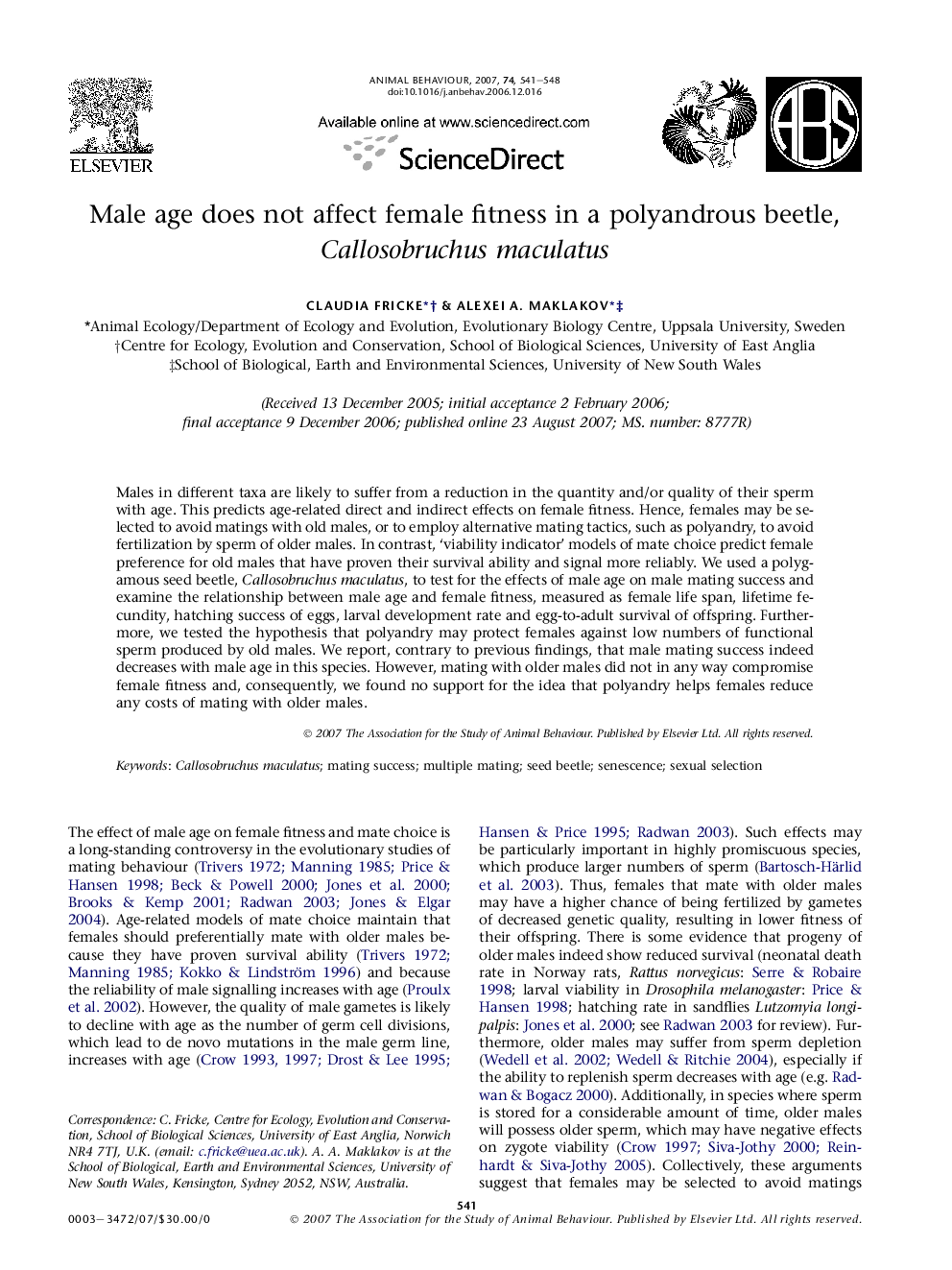| کد مقاله | کد نشریه | سال انتشار | مقاله انگلیسی | نسخه تمام متن |
|---|---|---|---|---|
| 2418080 | 1104336 | 2007 | 8 صفحه PDF | دانلود رایگان |

Males in different taxa are likely to suffer from a reduction in the quantity and/or quality of their sperm with age. This predicts age-related direct and indirect effects on female fitness. Hence, females may be selected to avoid matings with old males, or to employ alternative mating tactics, such as polyandry, to avoid fertilization by sperm of older males. In contrast, ‘viability indicator’ models of mate choice predict female preference for old males that have proven their survival ability and signal more reliably. We used a polygamous seed beetle, Callosobruchus maculatus, to test for the effects of male age on male mating success and examine the relationship between male age and female fitness, measured as female life span, lifetime fecundity, hatching success of eggs, larval development rate and egg-to-adult survival of offspring. Furthermore, we tested the hypothesis that polyandry may protect females against low numbers of functional sperm produced by old males. We report, contrary to previous findings, that male mating success indeed decreases with male age in this species. However, mating with older males did not in any way compromise female fitness and, consequently, we found no support for the idea that polyandry helps females reduce any costs of mating with older males.
Journal: Animal Behaviour - Volume 74, Issue 3, September 2007, Pages 541–548